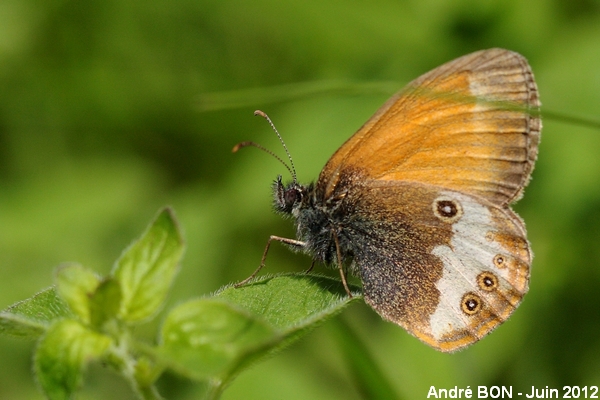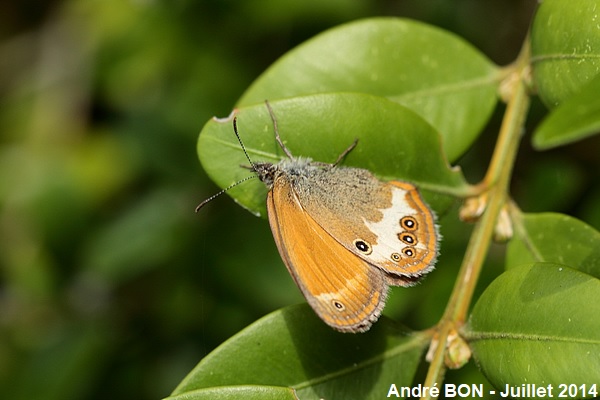

| Pearly Heath (Coenonympha arcania (Linnaeus, 1761)) |


|
|
Scientific name: Coenonympha arcania (Linnaeus, 1761) Common name: Pearly Heath French name: Céphale, Arcanie. Order: Lepidoptera Suborder: Rhopalocera Family: Nymphalidae Subfamily: Satyrinae Wingspan: 34-40 mm. Biotope: Bushy meadows, damp meadows, clearings, woodland edges, heath lands. Geographic area: Europe north to southern Sweden, missing in the British Isles, east to southern Ural. The Caucasus and Asia Minor. Flight time: June and July. Number of generations : 1 Caterpillar: Bright green with a much darker head. It shows a dark brown dorsal line bordered with white lines and yellowish or white lateral lines. Host plant: Various grasses (Poaceae) including Mountain Melic (Melica nutans) and Hairy Melic (Melica ciliata). |
The Pearly Heath has brown upper side of the wings with a wide orange area on the fore wings, at the base and on the discal area. The underside of the hind wing is brownish red with a broad white postdiscal band whose limit on the discal side is well marked but wavy. This white band is bordered by a series of black white-pupiled eyespots, circled with yellowish orange and then with black. The eyespot close to the costal edge is rather large. It is distant from the margin and it is located in the discal area over the limit between the postdiscal white band and the brownish discal area. The Pearly Heath over winters as a caterpillar at its fourth development stage. The other similar species of the same genus show a much thinner white band on the underside of the hind wings. |
| [To know more about the Pearly Heath] [Next picture] [Top] |

|
At this date, I have only observed one Pearly Heath in the region of Paris. |
| [To know more about the Pearly Heath] [Previous picture] [Top] |

|
The broad white band on the underside of the hind wing is useful to confirm the identification of the Pearly Heath species. |